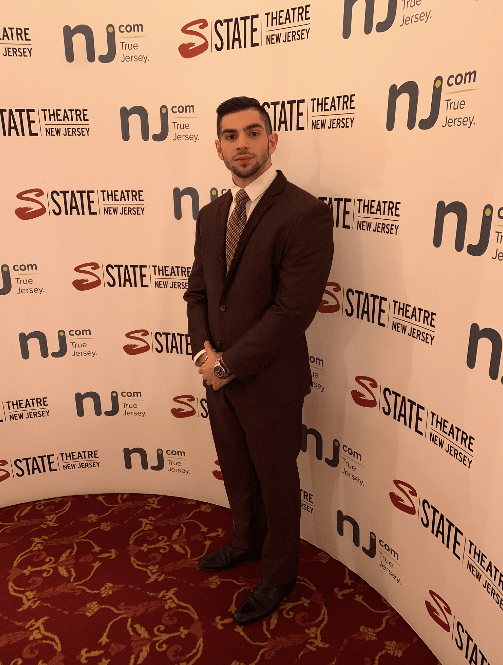Lifestyle
How Jason Stavrianidis Is Making a Name for Himself as a Jeweler

Jason Stavrianidis is a fifth-generation jeweler, diamond specialist, and jewelry designer at Venus Jewelers. Being heavily involved in the business, Jason’s tasks include serving clients with products and services, networking, digital marketing, jewelry bench work, polishing, and quality control, among other things.
Jason’s role with Venus Jewelers started at the age of 10, when he would go down to the store with his brother and help on weekends whenever possible. Another major driving factor is his desire to follow in his family’s steps and continue the legacy. He said, “I think my biggest motivation was my late grandfather George, my father Peter and my aunt Dora. All three of them contributed in one way or another in my decision to continue this family legacy and tradition. So here I am! One summer, my father had me work full time, and that’s when I realized that I had a passion for not only precious gems and jewelry, but also educating and helping consumers.”
Jason has fully taken on the role of leading Venus Jewelers into the future and continues to build his brand and family reputation. He said, “I feel a great sense of pride to be able to continue my family’s legacy. More than that, it is also a huge responsibility for me since Venus Jewelers is not just my job; it’s my way of life. I want to uphold the reputation my family has set through the years while allowing innovation and growth as my brand of leadership.”
Just a few months ago the company celebrated an enormous landmark, celebrating 40 years in the Jewelry business. A sure sign that many more successful years are ahead.
Check Venus Jewelers here: www.venusjewelers.com
Follow Jason here: https://www.instagram.com/jasonthegemologist/
Lifestyle
Kuby Cazal Shows Why Trusting in Allah Is the Ultimate Strategy

In an online world where entrepreneurship is often measured in Rolexes, rented Lambos, and airport selfies, Kuby Cazal stands out — not because he’s louder, but because he’s real.
He doesn’t flash his wealth. He doesn’t post luxury for the sake of validation. In fact, he’s said in several interviews that he doesn’t want to be known as the guy who flexes with money.
Instead?
He flexes with faith.
Kuby Cazal is a practicing Muslim — and for him, business isn’t just about profits and success. It’s about gratitude, growth, and fulfilling the responsibilities that come with the blessings Allah has given him.
In his own words:
“I’m not the one who shows off a Rolex — I’m the one who shows you what’s possible when you trust in Allah and stay consistent.”
And it shows. While others post stories of flashy lifestyles, Kuby’s focus is on impact. He prays. He fasts. He makes dua for his team. And he constantly reminds his audience that everything he has is from Allah — not from his own effort alone.
Behind the scenes, he’s helped countless dropshippers quietly. No screenshots. No clout. Just support. His message is simple: you can build a business and stay true to your deen.
But it wasn’t always this way. Kuby Cazal himself admits that a few years ago, his connection to Islam wasn’t where it should’ve been. “I prayed sometimes, I skipped sometimes,” he shares. “Now I don’t skip. Because everything I have, everything I am — it’s from Allah. Why would I ever miss thanking Him?”
In a world full of noise, Kuby Cazal is a different kind of entrepreneur. One who doesn’t point to himself as the source of success — but to Allah.
For young Muslims trying to navigate business and faith, he’s proof that you don’t have to sell your soul to build something meaningful. You can work hard, stay humble, and always keep Allah first.
And in Kuby’s case? That’s the biggest flex of all.
-

 Tech4 years ago
Tech4 years agoEffuel Reviews (2021) – Effuel ECO OBD2 Saves Fuel, and Reduce Gas Cost? Effuel Customer Reviews
-

 Tech6 years ago
Tech6 years agoBosch Power Tools India Launches ‘Cordless Matlab Bosch’ Campaign to Demonstrate the Power of Cordless
-

 Lifestyle6 years ago
Lifestyle6 years agoCatholic Cases App brings Church’s Moral Teachings to Androids and iPhones
-

 Lifestyle4 years ago
Lifestyle4 years agoEast Side Hype x Billionaire Boys Club. Hottest New Streetwear Releases in Utah.
-

 Tech7 years ago
Tech7 years agoCloud Buyers & Investors to Profit in the Future
-

 Lifestyle5 years ago
Lifestyle5 years agoThe Midas of Cosmetic Dermatology: Dr. Simon Ourian
-

 Health6 years ago
Health6 years agoCBDistillery Review: Is it a scam?
-

 Entertainment6 years ago
Entertainment6 years agoAvengers Endgame now Available on 123Movies for Download & Streaming for Free
